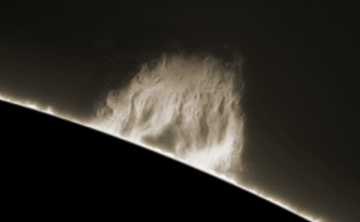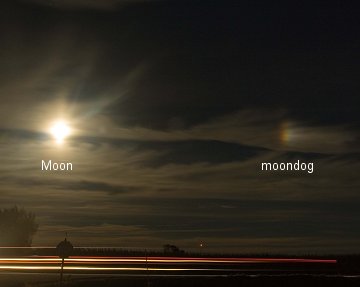 Autumn is here, and it's a wonderful time for stargazing. Find out what's up from Spaceweather PHONE.
Autumn is here, and it's a wonderful time for stargazing. Find out what's up from Spaceweather PHONE.
COMET SWAN: Comet Swan is moving into the evening sky. Too dim for the naked eye, the comet is nevertheless very pretty in the eyepiece of a backyard telescope. Look for it beneath the handle of the Big Dipper after sunset. [sky map] [ephemeris]
SOLAR ACTIVITY: These days, sunspots are scarce--it's solar minimum. But there's more to solar activity than sunspots. "Even the quiet sun can knock your socks off with a beautiful prominence," says Tom Masterson of Washington State who took this picture on Oct. 9th.
In Buffalo, New York, Alan Friedman caught the same prominence waving at him:

Perhaps it's waving at you, too. Got a solar telescope? Take a look.
more images: from Les Marczi of Ontario, Canada; from John Stetson of Falmouth, Maine; from Pete Lawrence of Selsey, West Sussex, UK;
MOONDOGS: When the moon comes beaming through your window tonight, peek outside. You might see a moondog. Betsy E. Bie photographed this one on Oct. 6th from a country road near Sheboygan Falls, Wisconsin:

Moondogs are created by ice crystals in high clouds, which refract moonlight into a rainbow-colored patch 22o from the Moon. The same crystals that make moondogs can also make moon pillars and spectacular moon halos. Keep an eye out for them, too!

